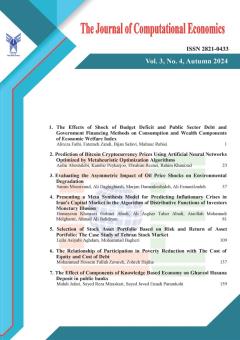-
-
-
Open Access Article
1 - The Role of Financial crises in the impact of Liquidity on Stock Returns: Empirical evidence from Tehran Stock Exchange (TSE)
Ehsan Rajabi -
Open Access Article
2 - The Impact of Exchange Rate Volatility and Uncertainty on Stock Returns in Tehran Stock Exchange (Case Study: Agriculture and Food Industry)
Ehsan Rajabi
List of Articles Ehsan Rajabi
-
The rights to this website are owned by the Raimag Press Management System.
Copyright © 2021-2025


